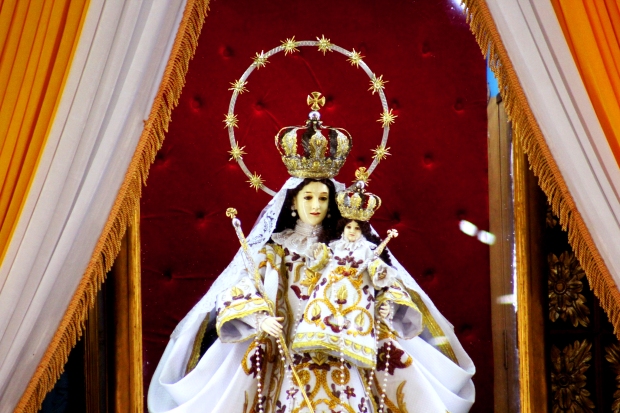
Aliaga, Nueva Ecija, known for its agricultural products and comparatively cool and healthful climate, and is situated about midway between the Pampanga Grande and the Pampanga Chico rivers, became a seat of two distinct devotions of Nueva Ecija, St. John the Baptist where the traditional Taong Putik Festival is held and its Patroness, Nuestra Señora de las Saleras.
For centuries, the devotion to Nuestra Señora de las Saleras has thrived quietly within this Municipality. It is the sole destination in the Philippines where the Virgin under this specific title is revered, drawing pilgrims from far and wide even today.
The Visage of Aliaga’s Queen
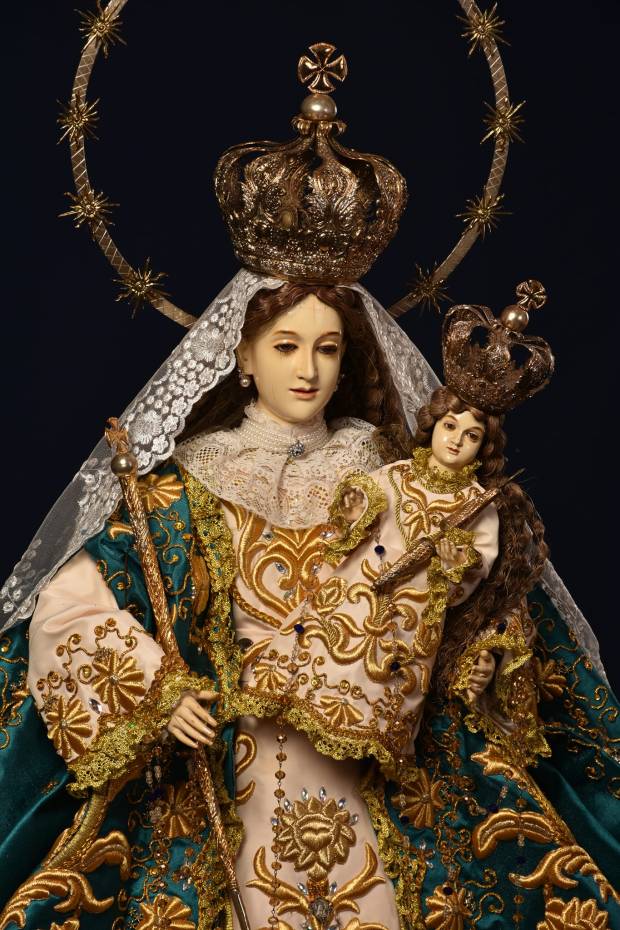
The venerable image of Nuestra Señora de las Saleras of Aliaga, Nueva Ecija, is a “de vestir” representation of the Madonna and Child, enshrined at the Main Altar of the Parish-Shrine. The Mother and Child are adorned in the typical Hispano-Filipino style of vesting venerated images throughout the country. The Madonna wears a long, elegant dress with wide sleeves, a stylized collar, and a cape fashioned in the “palikpik” style. Her long, curly hair is veiled, with the diagnostic “Doce Estrellas” adorning it. The Child Jesus, cradled in His mother’s arms, is dressed in an embroidered robe, with His own long, curly hair. Both figures gaze upon the viewer with serene smiles, each holding a scepter symbolizing power and authority, and adorned with crowns upon their heads.
Origin of the Devotion

The devotion to Nuestra Señora de las Saleras originated in Los Navalucillos, Toledo, Spain, where, according to tradition, the Virgin appeared to a shepherd distributing salt to his goats—a deeply ingrained custom in the region to supplement the deficient salt supply in pastures. The Virgin invited her faithful to join her in procession every September 8, the Feast of her Nativity. Revered and cherished by all, her shrine, established on April 14, 1632, attracts scores of visitors daily, seeking solace and guidance through prayer.
The feast of Nuestra Señora de las Saleras of Los Navalucillos is celebrated annually on September 8, preceded by a nine-day novena. The eve of the festivity is marked by parades, religious processions, performances featuring giants and big heads, festivals, and a diverse array of activities, including the exhilarating water war. The festivities also include the accompaniment of brass bands and local clubs, adding to the vibrant atmosphere of celebration and reverence.
The devotion in the Philippines

The devotion to Nuestra Señora de las Saleras began with the evangelization work in Aliaga, then named “Pulong Bibit” and was then part of Pampanga which is a vast land extending from Cagayan to Manila. In 1848, Gapan, San Antonio, Cabiao, and Aliaga were segregated and made part of Nueva Ecija. It was on the 8th of February 1849 that Aliaga was formally erected as a town.
The first gobernadorcillo, Don Aniceto Ferry changed “Pulong Bibit” to “Aliaga” named after his hometown in Teruel, Spain. According to the old books of the church, the parish was established in 1849 under the administration of the Augustinian Friars with Fray Valentin Garcino Payad, OSA as its first priest of the parish. It was placed under the patronage of Nuestra Señora de las Saleras.
The title “de las Saleras” was associated with the Blessed Virgin Mary when a ship carrying an image of the Blessed Mother, caught in a storm, was saved after prayers, and the seawater on her gown turned into salt upon drying. Aliaga, prone to flooding, also attributes its protection to Our Lady.
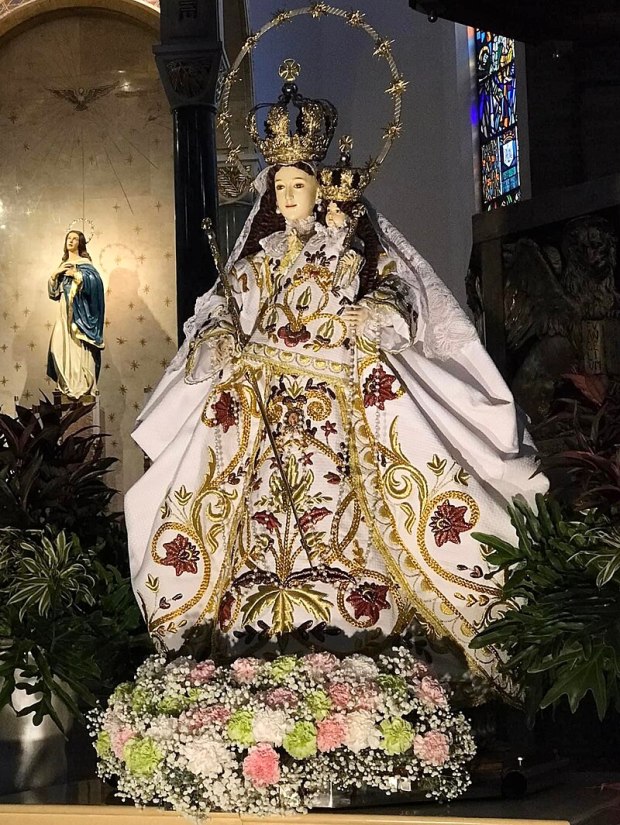
The first parish church was made of light materials. After a few years, a church made of “tisa” was constructed to house the venerable image of the Virgin. Despite the original church being destroyed during the Philippine Revolution, the Church was rebuilt, and the devotion persisted despite the theft of the original image in the 1960s.
One notable miracle was the great flood in 1936, which submerged almost the entire town. It was said that the raging waters which could have killed hundreds were restrained by a lady described as having long hair and believed to be the miraculous Nuestra Señora de las Saleras.
In modern times, the image has become a perennial participant in the annual Intramuros Grand Marian Procession. Years later, in celebration of the parish’s 175th anniversary, the original image was brought to the Manila Cathedral to further introduce “Inang Saleras” to the Filipino faithful.
Ecclesiastical Recognition
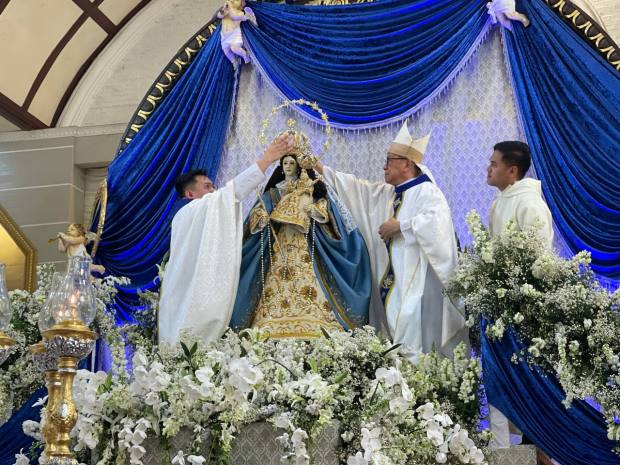
On September 7, 2013, celebrating the Golden Jubilee of the Diocese of Cabanatuan, the parish was declared a Diocesan Shrine of Nuestra Señora de las Saleras.
On April 20, 2024, the venerable image of Nuestra Señora de las Saleras received the honor of Episcopal Coronation officiated by His Excellency Bishop Sofronio A. Bancud, SSS, DD, Bishop of the Diocese of Cabanatuan in the presence of parishioners and devotees.
The Devotion at present
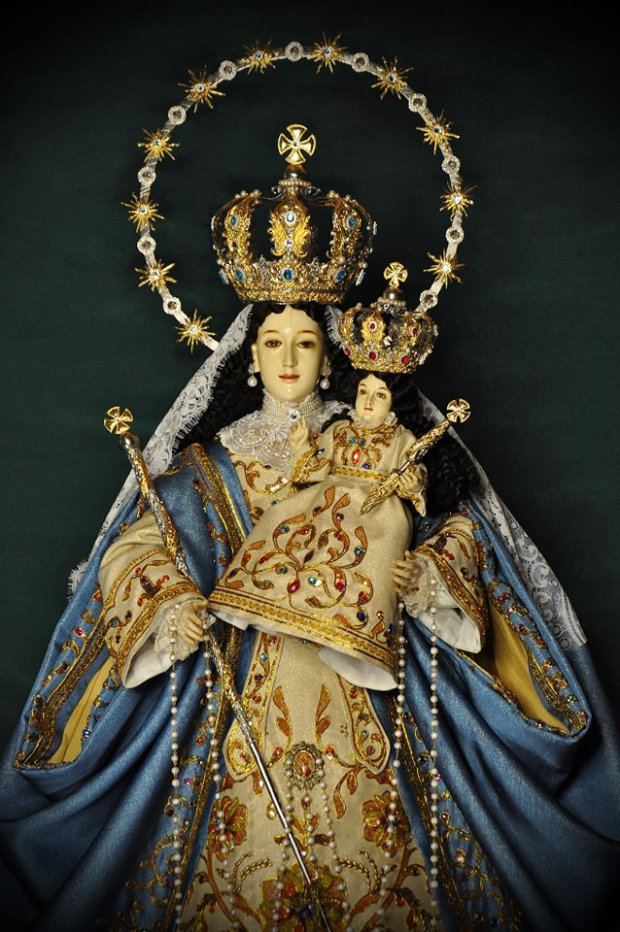
The propagation efforts, particularly the distribution of blessed salt, have also played a significant role in spreading devotion to the Virgin and reinforcing the belief in her miraculous powers. As pilgrims continue to flock to her shrine, the devotion to Nuestra Señora de las Saleras remains a cornerstone of faith and tradition in Nueva Ecija.
In conclusion, the devotion to Nuestra Señora de las Saleras in Nueva Ecija stands as a testament to the local community’s enduring faith and spiritual connection to the Blessed Virgin Mary. Through centuries of veneration, her intercession has been sought for protection, guidance, and miracles, making her a beloved figure among the faithful.
References:
“The History of the Nuestra Señora delas Saleras”, Retrieved from https://nsdsparishaliaga.weebly.com/history.html on April 18, 2024.
Salvia, Jose Luis, “Nuestra Señora de las Saleras”, Retrieved from https://tecuidaigualqueajesus.blogspot.com/2021/07/nuestra-senora-de-las-saleras.html on April 18, 2024.
Photos:
Amparado, Mery
Diocesan Shrine of Nuestra Señora de las Saleras
Innocencio, Glenn
Naval, Wilfred Jason
+AMDG+ +AMPSPC+
